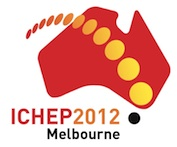Speaker
Prof.
Mike Hildreth
(University of Notre Dame (US))
Description
Precision measurement of the ultra-rare $K^+\to\pi^+\nu \bar\nu$ decay at Fermilab would be one of the most incisive probes of quark flavor physics this decade. Its dramatic reach for uncovering new physics is due to several important factors: The branching ratio is sensitive to most new physics models which extend the Standard Model to solve its considerable problems. The Standard Model prediction for BR($K^+\to\pi^+\nu \bar\nu$) is broadly recognized to be theoretically robust at the 5--10\% level. Only a precious few accessible loop-dominated quark processes can be predicted with this level of certainty. The $K^+\to\pi^+\nu \bar\nu$ branching ratio is highly suppressed in the Standard Model to the level of $< 10^{-10}$ ($<1$ part in 10 billion). This suppression allows physics beyond the Standard Model to boost the branching fraction with enhancements of up to a factor of five above the Standard Model level. The certainty with which the Standard Model contribution to $K^+\to\pi^+\nu \bar\nu$ can be predicted will permit a 5$\sigmA$ discovery potential for new physics even for enhancements of the branching ratio as small as 35\%. This sensitivity is unique in quark flavor physics and allows probing of essentially all models of new physics that couple to quarks within the reach of the LHC. Furthermore, a high precision measurement of $K^+\to\pi^+\nu \bar\nu$ is sensitive to many models of new physics with mass scales well beyond the direct reach of the LHC. The ORKA initiative aims to precisely measure the $K^+\to\pi^+\nu \bar\nu$ process based on established detector techniques driven with the Fermilab Main Injector high intensity proton source. In recognition of this exciting opportunity the Fermilab director has recently granted scientific approval to the ORKA proposal. The physics reach and experimental techniques of the ORKA initiative will be discussed, as well as opportunities for collaboration in the ORKA adventure and the longer term Intensity Frontier roadmap at Fermilab.
Authors
Andreas Kronfeld
(Fermilab)
Michael Hildreth
(University of Notre Dame (US))
Prof.
Mike Hildreth
(University of Notre Dame (US))
Co-author
Bob Tschirhart
(-)
